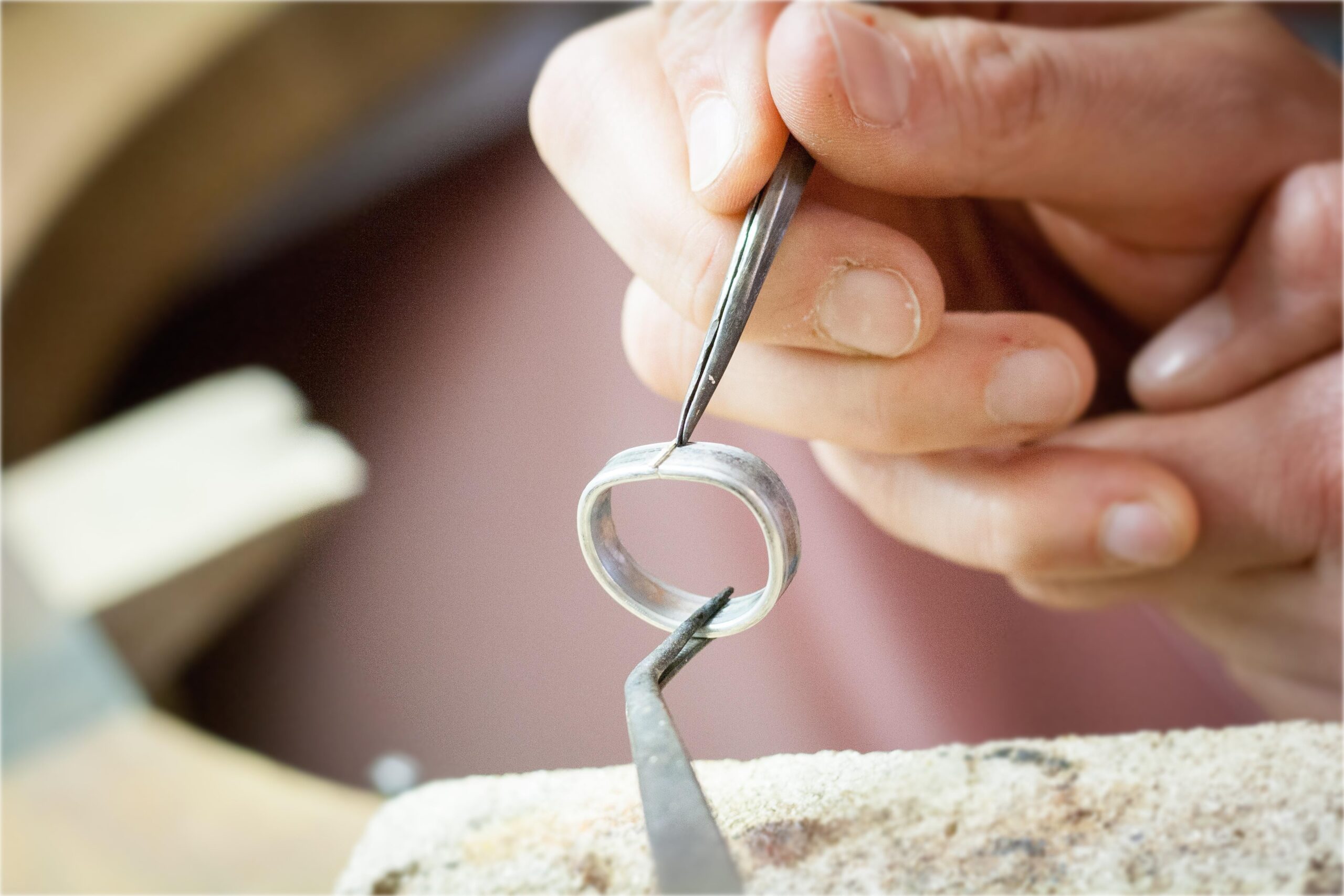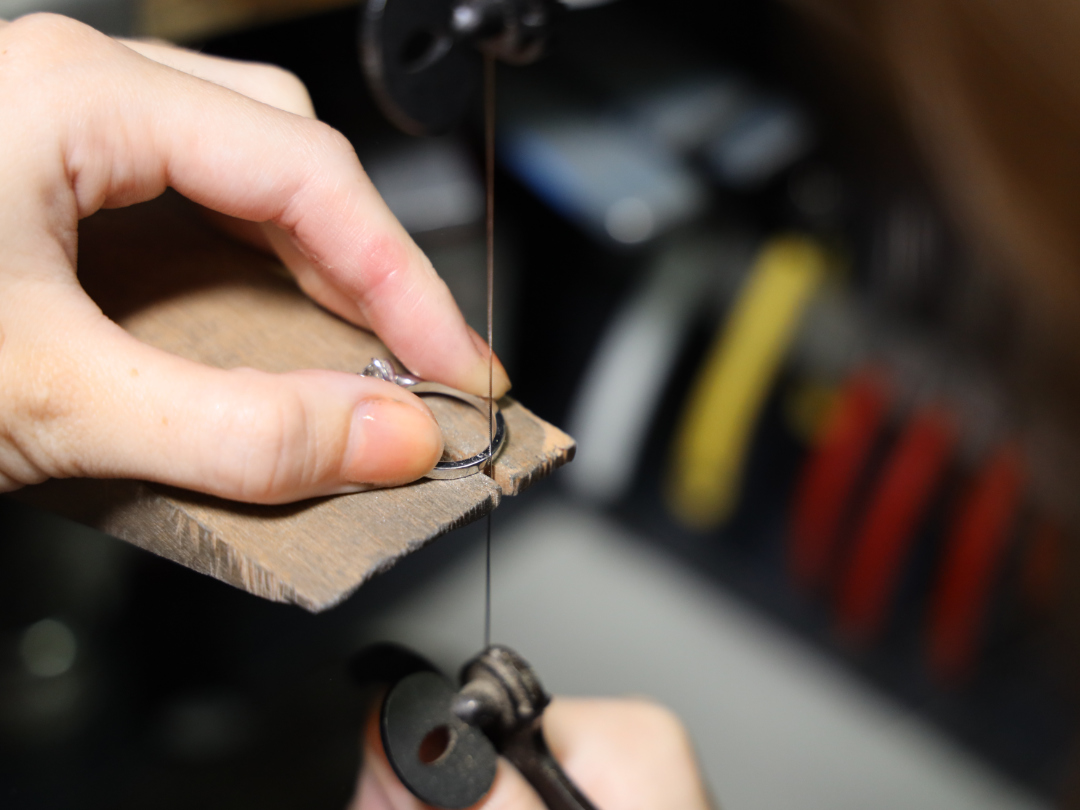Does resizing a ring damage it? This is a common question that many people ask before altering their cherished jewelry. While resizing a ring is often a necessary and practical solution, it’s important to understand the potential risks involved. Ring resizing involves altering the metal band to fit your finger, which can affect its structural integrity, particularly if the resizing is significant.
The impact of resizing depends on several factors, including the ring’s design, metal type, and the skill of the jeweler performing the work. In this article, we’ll explore the different resizing methods, the potential for damage, and how to minimize the risks.
Ring Resizing Methods: Does Resizing A Ring Damage It

Resizing a ring is a common practice, whether it’s to adjust for weight fluctuations, change in finger size, or to simply achieve a more comfortable fit. Understanding the various methods used to resize rings is crucial to making an informed decision about how to proceed.
Ring Resizing Techniques
Resizing a ring typically involves adding or removing metal. The most common techniques are:
- Adding Metal: This method involves soldering additional metal to the inside or outside of the ring band. The amount of metal added depends on the desired size increase. This method is typically used for rings that are too small.
- Removing Metal: This method involves carefully cutting and removing a small section of the ring band. The removed metal is then smoothed and polished to create a seamless finish. This method is commonly used for rings that are too large.
Traditional Resizing
Traditional resizing methods involve using hand tools and traditional techniques. This method is typically more affordable, but it may take longer to complete.
- Advantages:
- More affordable
- Suitable for most ring styles
- Disadvantages:
- Can take longer to complete
- May require multiple adjustments
- Potential for visible seams or imperfections
Laser Resizing
Laser resizing is a newer technique that uses a laser to precisely cut and fuse metal. This method is typically faster and more precise than traditional resizing.
- Advantages:
- Faster processing time
- More precise results
- Minimizes visible seams or imperfections
- Disadvantages:
- More expensive than traditional resizing
- May not be suitable for all ring styles
- Potential for damage to delicate settings or gemstones
Comparison of Resizing Methods
| Method | Advantages | Disadvantages ||—|—|—|| Traditional | More affordable, suitable for most ring styles | Longer processing time, potential for visible seams or imperfections || Laser | Faster processing time, more precise results, minimizes visible seams or imperfections | More expensive, may not be suitable for all ring styles, potential for damage to delicate settings or gemstones |
Factors Influencing Ring Resizing Damage

Resizing a ring can be a necessary process, but it’s important to understand the factors that can increase the risk of damage. Several aspects of the ring and the resizing process can influence the outcome, impacting the ring’s integrity and longevity.
Ring Size Difference
The size difference between the original ring size and the desired size significantly impacts the potential for damage during resizing. Larger size changes require more metal manipulation, increasing the risk of weakening the ring’s structure. For example, resizing a ring by two or more sizes can be more challenging and prone to damage than a one-size adjustment.
Ring Design
The ring’s design plays a crucial role in determining its resizing suitability. Certain designs are inherently more susceptible to damage during the process.
Designs Prone to Damage
- Rings with intricate details: Rings featuring delicate designs, such as filigree, milgrain, or intricate engravings, are more likely to experience damage during resizing. The metal manipulation involved in resizing can distort or break these delicate features.
- Rings with thin bands: Rings with thin bands are more susceptible to bending or breaking during resizing, especially if the size change is significant. Thin bands have less metal to work with, making them more vulnerable to structural compromise.
- Rings with gemstones: Resizing rings with gemstones can be challenging and risky. The process can affect the gemstone’s setting, potentially loosening it or causing damage. Additionally, resizing can alter the ring’s balance, impacting the gemstone’s stability.
- Rings with unusual shapes: Resizing rings with non-standard shapes, such as oval, marquise, or pear-shaped rings, requires more precision and expertise. These shapes present unique challenges for resizing, increasing the risk of damage.
Metal Thickness, Does resizing a ring damage it
The thickness of the metal used in the ring also influences its susceptibility to damage during resizing.
Metal Susceptibility to Damage
| Metal | Susceptibility to Damage | Explanation |
|---|---|---|
| Platinum | High | Platinum is a dense and strong metal, but its malleability makes it prone to distortion during resizing. |
| Gold | Moderate | Gold is a softer metal than platinum, making it easier to work with during resizing. However, it can still be susceptible to damage if the resizing process is not done carefully. |
| Silver | Low | Silver is a softer metal than gold, making it relatively easy to resize. However, it is more prone to scratches and dents during the resizing process. |
Minimizing Damage During Ring Resizing

Ring resizing is a delicate process that can potentially affect the integrity of your precious jewelry. While it’s generally safe, certain factors can increase the risk of damage. To minimize the chances of your ring being compromised during resizing, it’s crucial to prioritize a skilled and experienced jeweler and follow proper care and maintenance practices.
Choosing a Skilled Jeweler
Selecting a qualified jeweler is paramount to ensure the resizing process is performed correctly and with minimal risk of damage. Experienced jewelers possess the expertise and specialized tools necessary to handle the intricate details of your ring. They understand the various metals and gemstones used in jewelry and can adapt their techniques accordingly.
- Experience and Expertise: Seek out jewelers with a proven track record in ring resizing. Look for certifications or affiliations with reputable organizations like the American Gem Society (AGS) or the Gemological Institute of America (GIA). These credentials indicate a commitment to professional standards and ongoing education.
- Communication and Transparency: A skilled jeweler will openly discuss the resizing process with you, explaining the potential risks and benefits involved. They will also provide you with a clear estimate of the cost and timeline for the resizing.
- Reputation and Reviews: Check online reviews and testimonials from previous clients to gauge the jeweler’s reputation and level of customer satisfaction. Look for positive feedback regarding their expertise, communication, and overall service.
Jeweler’s Techniques for Minimizing Damage
Experienced jewelers employ specific techniques to minimize damage during the resizing process. They carefully assess the ring’s design, material, and size to determine the best approach.
- Precision Cutting and Soldering: For resizing, jewelers typically use a specialized saw to cut the ring and then solder the added or removed metal. Precision cutting and soldering are essential to ensure a seamless and durable finish.
- Proper Metal Handling: The type of metal used in your ring affects how it’s handled during resizing. Jewelers have specific techniques for working with different metals, such as gold, platinum, and silver, to prevent distortion or damage.
- Careful Gemstone Handling: If your ring features gemstones, the jeweler will take extra care to protect them during the resizing process. They may use specialized tools or techniques to avoid scratching, chipping, or dislodging the stones.
Proper Care and Maintenance After Resizing
Even with the most skilled jeweler, proper care and maintenance after resizing are essential to preserve the ring’s integrity. Following these practices can help prolong its lifespan and minimize the risk of further damage.
- Avoid Harsh Chemicals: Avoid exposing your ring to harsh chemicals, such as bleach, chlorine, and ammonia, which can damage the metal and dull the shine. These chemicals can also weaken the solder joints, making the ring more prone to breaking.
- Regular Cleaning: Regularly clean your ring with a mild soap and water solution to remove dirt, oil, and grime that can accumulate over time. Avoid using abrasive cleaners or harsh brushes that could scratch the surface.
- Professional Inspections: Schedule regular professional inspections to ensure the ring’s integrity and check for any signs of wear or damage. A jeweler can tighten loose prongs, repair minor scratches, and address any potential issues before they become more significant.
Ultimately, the decision of whether or not to resize a ring is a personal one. If you’re considering resizing your ring, it’s essential to weigh the potential risks and benefits. By understanding the process, the factors that can influence damage, and the signs of damage, you can make an informed decision that protects your valuable jewelry.
Popular Questions
Is it better to resize a ring up or down?
Resizing a ring down is generally considered more challenging and has a higher risk of damage than resizing it up. This is because removing metal can weaken the ring’s structure.
Can I resize a ring myself?
It’s strongly discouraged to attempt resizing a ring yourself. This is a delicate process that requires specialized tools and expertise. Trying to resize it at home could easily damage the ring beyond repair.
How long does it take to resize a ring?
The resizing time can vary depending on the complexity of the resizing, the jeweler’s workload, and the method used. It can take anywhere from a few days to a couple of weeks.